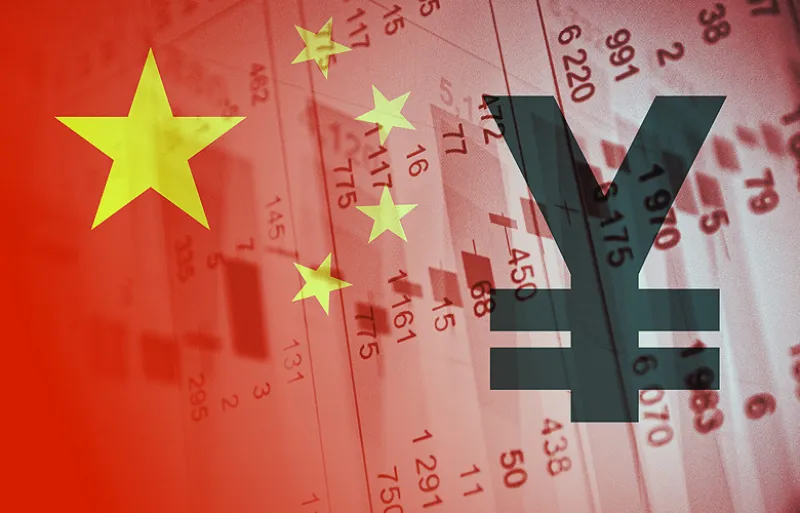China’s announcement last week that it will expand the opening of its markets to foreign financial companies could usher in a new era for global asset managers, allowing them in a few years to form wholly-owned ventures that could directly raise funds from China’s $1.8 trillion retail mutual fund market for the first time ever.
The new rules will raise caps on ownership by foreign banks of Chinese banks and asset managers and will also allow foreign firms to own majority stakes in joint ventures with mainland Chinese securities firms and life insurers. Regulators currently allow foreign financial institutions limited access to ownership of Chinese financial institutions, with a 25 percent cap on foreign ownership in banks, a 49 percent cap on foreign ownership in asset management firms, and a 51 percent cap on foreign ownership in brokerages and insurers.
Peter Alexander, the managing director of Shanghai-based research firm Z-Ben Advisors, which has advised global fund management firms on their China strategies since 2004, said the announcement by a senior official on November 10 — a day after U.S. President Donald Trump left China after a three-day visit — took many foreign players by surprise.
“We didn’t expect it to be announced now, but neither are we surprised,” he says of the announcement, made at a news conference in Beijing by China’s vice finance minister Zhu Guangyao. Zhu said that China was “formulating a timetable and roadmap for financial sector reform and opening up.”
Though officials have yet to specify a time frame for the full lifting of the restrictions, Alexander expects all caps and restrictions on foreign ownership will be lifted by 2020.
[II Deep Dive: Foreign Fund Managers Eye China’s Latest Market Opening]
Andrew Collier, a former president of Bank of China International USA, the U.S. subsidiary of China’s global investment banking arm, is sanguine about the news, however. Foreign financial firms will need to realize that while regulators in Beijing may be handing out licenses, officials in local governments may seek to protect local players, and gaining China marketshare will not be easily achieved, says Collier, the Hong Kong-based managing director of Orient Capital Research, which advises global hedge funds on their Asia and China strategies.
“China is likely to delay full entry for foreign financial firms through non-tariff barriers,” Collier wrote in an e-mail to Institutional Investor. “Beijing may grant licenses but local governments will drag their feet.”
Collier cautioned that the timing of the announcement by Vice Finance Minister Zhu was part of a larger Chinese strategy in its U.S.-China negotiations.
“I expect modest progress in insurance and investment banking, with small investments at the outset,” Collier wrote. “Commercial bank lending is tightly controlled and hard for outsiders to crack. Smaller, weaker banks will be open to selling, but valuations are likely to be unrealistic and risk very high. It’s a step in the right direction, but not a great leap.”
So far, a total of 27 of foreign asset managers — including Fidelity, Invesco, and Vanguard — have taken advantage of reforms passed in 2016 that allowed them to set up wholly-owned China ventures to raise funds from wealthy Chinese investors and institutional clients. Before the 2016 liberalization, some foreign fund firms already had formed joint ventures with Chinese partners in which they held up to 49 percent equity stakes in mutual fund companies targeting retail investors.
The new rules, to be announced early next year, will allow foreign fund firms to seek majority stakes of 51 percent, Alexander says, adding that officials will lift all caps by 2020 or so and allow foreign venture partners to seek to buy out their domestic partners or set up operations where they own 100 percent of the equity. “China is the only market outside the U.S. that can move the AUM needle,” Alexander says.
Competition in China’s retail mutual fund market is far less intense than in the private high-net-worth and institutional market, he says, noting that there are only 125 mutual fund companies catering to a market of almost a billion people and 20,000 firms catering to a few million wealthy individuals and corporate clients.
China is on its way to becoming the world’s largest asset management market after the United States, according to a study issued earlier this month by Casey Quirk, a research practice owned by U.S.-based management consultancy Deloitte. Casey Quirk predicts that China will become the second-largest asset management market by 2019 and also expects China to attract half of the industry’s net new asset inflows from retail and high net worth investors in the coming two years, according to a news release issued by the firm on November 7.
By 2019, assets under management in China will grow to $17 trillion, up from $2.8 trillion last year, according to the study. But Casey Quirk predicts that foreign firms will account for only 6 percent of that market by 2030, hindered in part by the preference among local investors for domestic assets classes and local firms.
Z-Ben’s Alexander is far more optimistic, believing that foreign players can have up to a 25 percent market share in a decade. “Foreign managers can certainly scale and can certainly be profitable,” he says. “China investors want to reward those who deliver returns. It is a meritocracy. Those who perform well will gain AUM and market share.”






